07061201 Acropolis Q roof studies 2266i13
08061201 Electronic Calculation Center Olivetti plan scale comparisons 2091i02
10061201 Monastery of La Tourette plans section with other plans by Le Corbusier 2178i02
10061202 Tugendhat House plans elevations with other domestic plans 2158i01
10061203 Farnsworth House plans sections elevations with other domestic plans 2174i01
10061204 Maison ŕ Bordeaux plans sections elevations with other domestic plans 2291i01 b
10061205 Neue Staatsgalerie plans section elevation with other museum plans 2234i01
10061206 Leicester University Engineering Building plans section elevation with museum plans 2181i00
13061201 Parliament Buildings of West Pakistan @ NNTC plans models 2205i04
16061201 GAUA S01 IQ28 Cubist ICM infill 2429i185
16061202 GAUA S05 IQ28 block inverted opaque
16061203 GAUA S05 IQ28 Cubist ICM infill 2429i186
17061201 SANAA Art Gallery of New South Wales Sydney
17061202 MVRDV Ilot Queyries Bordeaux
18061201 Villa Geerlings plans elevation site plan 2295i02
18061202 Pantheon Paradigm sector 1 plans 4400x2200 243bi27
18061203 Pantheon Paradigm sector 2 plans 4400x2200 243bi28
18061204 Pantheon Paradigm sector 3 plans 4400x2200 243bi29
18061205 Pantheon Paradigm sector 4 plans 4400x2200 243bi30
18061206 Pantheon Paradigm sector 5 plans 4400x2200 243bi31
19061201 Headquarters of D.A.T.A. plans perspectives 2397i08
21061201 Ichnographia Phila/Roma 002 iiq Infringement Complex Colosseum Pantheon Temple of Venus and Rome Arch of Janus Quadrifrons Basilica of Maxentius/Constantine Arch of Constantine Baths of Constantine Danteum plans 2348i49
| |
2009: "All the world's a next stage." 1999: My CAD work, or at least my 'expanding, stretching, compacting, morphing, collage (citying), schizo-analyzing' CAD work is a manifestation of the new dexterity engendered by the capabilities of CAD specifically and digital media in general. In simple terms, my unorthodox manipulation of CAD data reflects the many new ways of "drawing" that CAD allows. On a "theoretical" level, my manipulation(s) present new drawing/designing paradigms that for the most part did not exist before CAD/digital media.
We are living at a very significant time,
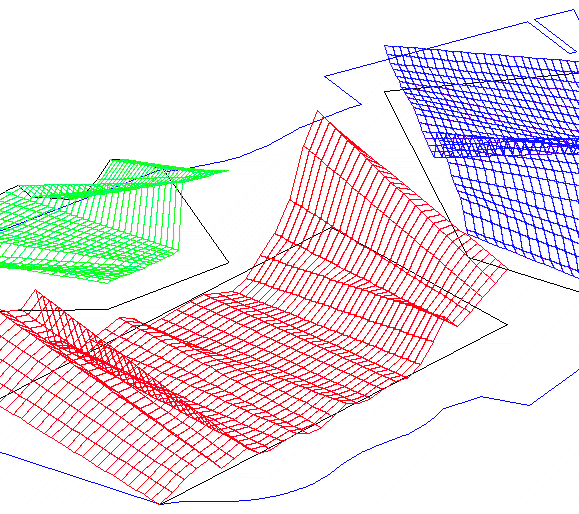
however, because the slice of the body that corresponds to the year 2000 is right at that elevation where the bottom-most tips of the rib cage become part of the 'plane of the present.' This is significant mainly because there has not been a skeletal presence along the body's periphery since the presence of the crest of the hipbones c. 1500. The 'plane of the present' is now rising above that portion of the body where expansion most readily occurs, and thus humanity (whether it knows it or not) is now in a state where human civilization's grossest era of unrestrained expansion is now steadily coming to an end as an all-encompassing (protective) structural 'network' begins to take place (in the present).
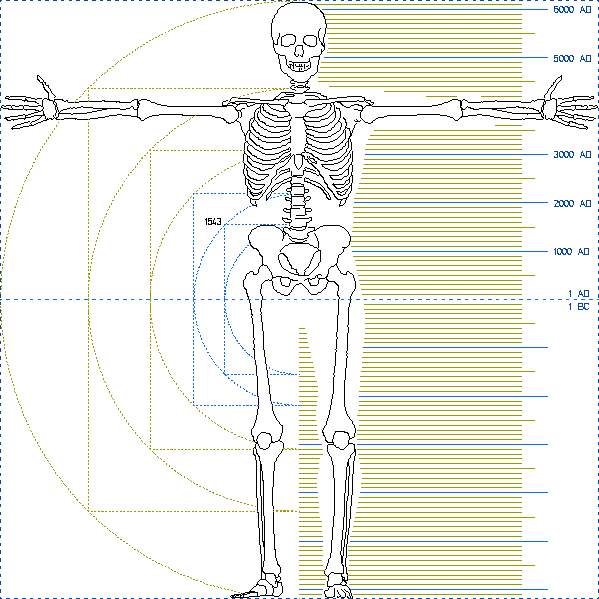
In all probability, architectural use of the Internet will gel into a number of accepted and standard operations. Creative use of the Internet architecturally, however, is unpredictable precisely because digital media has a built-in infinity factor. If enough architects begin using the Internet creatively and architecturally, then whole new species of architectures of 'unbuilt' reality will evolve. 2012: Lotus International 19 happens to be the first Lotus magazine I ever bought, so its contents are (still) fairly well ingrained within my memory. Looking over "Cities within the city" (again) last night reminded me of another subsequent Ungers essay--"Architecture of the Collective Memory"--
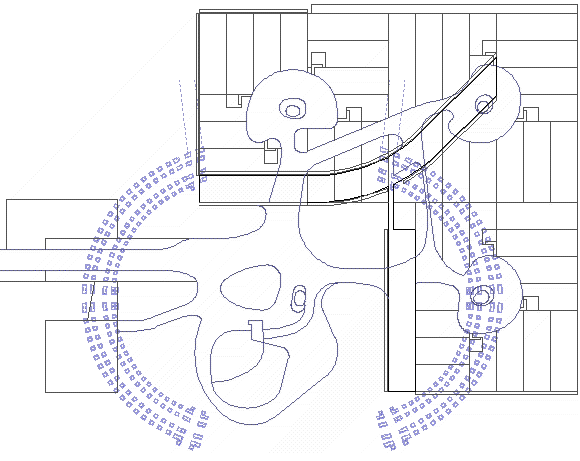
also published within Lotus, this time Lotus International 24 (1979). I personally remember this essay as something I really connected with, something that I really liked the idea of, but I don't think I've (re)read the essay in many years. Of course, I reread "Architecture of the Collective Memory--The infinite catalogue of urban forms" last night, and wow, it like blew me away because what Ungers relates is exactly how I've come to see Piranesi's Ichnographia Campus Martius, that is, as a whole city of architecture of collective memory, indeed an infinite catalogue of urban forms (e.g. 3178, 3179, 3180, 3181). Interestingly, such a view of the Ichnographia Campus Martius is what Aureli (and Eisenman) do not (want [you] to) see the Ichnographia Campus Martius as.
Being restless, I continued to read more of The Possibility of Absolute Architecture. I read the Boullče chapter and stated the Ungers/OMA chapter (five). Ten pages into chapter five you encounter material
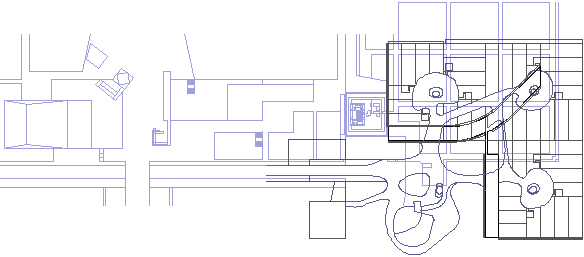
on the Havellandshaft, which is how Ungers ends "Architecture of the Collective Memory," yet Aureli nowhere mentions the "collective memory" aspect of the Havellandshaft (nor does Aureli footnote reference "Architecture of the Collective Memory--The infinite catalogue of urban forms" in Lotus International 24).
I now feel inspired to write a book entitled The Reality of Convenient Memory Architecture, theory even.
"Architecture of the Collective Memory" begins with these passages:
In his book Invisible Cities Italo Calvino invented an imaginary conversation between the Venetian traveler Marco Polo and the great emperor of a distant country.
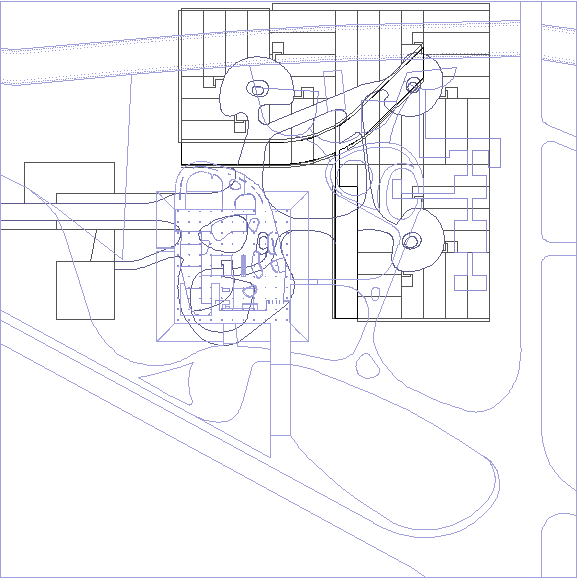
"At this point Kublai Khan interrupted him or imagined interrupting him, or Marco Polo imagined himself interrupted, with a question such as: 'You advance always with your head turned back?' or 'Is what you see always behind you?' or rather 'Does your journey take place only in the past?'"
All this so that Marco Polo could explain or imagine explaining or succeed finally in explaining to himself that what he sought was always something lying ahead, and even if it was a matter of the past it was a past that changed gradually as he advanced on his journey, because the traveler's past changes according to the route he has followed: not the immediate past, that is, to which each day that goes by adds a day, but the more remote past. Arriving at each new city, the traveler finds again a past of his that he did not know he had: the foreigness of what you no longer are or no longer possess lies in wait for you in foreign unpossessed places. 2002: So, with all the background of the Sessorian Palace, why did Piranesi fuse the Domus Alexandri Serveri and the Sessorium and place them in a completely other part of Rome within the Ichnographia Campus Martius? On 21 September 1998 I asked myself,
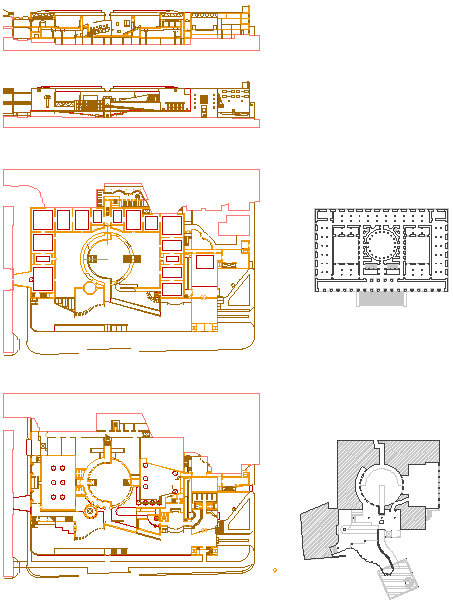
"Could Piranesi be weaving some complicated message which refers to both the reigns of Elagabalus and Alexander, where Alexander successfully undid the corruption of Elagabalus and began to turn Rome toward a more Christian and morally sound city and empire?
Meanwhile, in quondam Constantinople...
| |
2014.06.12 08:07
Editor's Picks #371
Here, overdose on this:
quondam (CONDAM, Inscr. Rein. p. 543), adv. [quom=cum, with the demonstr. part. dam]. I. At a certain time, at one time, once, heretofore, formerly: verum tempestas, memini, quondam fuit, cum, etc. Plaut. Truc. 2, 4, 29: olim, olim isti fuit generi quondam quaestus, Ter. Eun. 2, 2, 15; cujus illa quondam socrus paulo ante uxor fuisset, Cic. Clu. 66, 188: omnia quae sunt conclusa nunc artibus dissipata quondam fuerunt, id. de Or. 1, 42, 187: po pulus Romanus qui quondam in hostes lenissimus[?] existimabatur, hoc tempore, etc., id. Rosc. Am. 53, 154: ut quondam Marsaeus, Hor. S. 1, 2, 55; 2, 5, 21; Curt. 3, 1, 12; 3, 4, 3; Ov. F. 2, 547. --Of those desceased, the late, former, deceased (post-class.): OPTIMAE MEMORIAE VIRO QVOND. FILIO AELII, etc., Inscr. Grut. 389, 8: Valeriani quondam centur onis testementum, Cod. Just. 6, 21, 3: matris tuae quondam mancipia, id. 7, 33, 8; 8, 57, 2; cf.: Cyro quondam rege, Curt. 10, 1, 23. -- II. Transf. A. At certain times, at time, sometimes : quid, cum saepe lapidum, sanguinis nonnumquam, terrae interdum, quondam etiam lactis inber effluxit? Cic. Div. 1, 43, 98: stomachum, cujus tu simileum quondam habebas, id. Fam. 2, 16, 2: quondam cithara tacentum Suscitat Musam. Hor. C. 2, 10, 18: quondam et am victis redit in praecordia virtus, Verg. A. 2, 367; Ov. M. 9, 170; Lucr. 6, 109: senatus quondam legatos decreverit, Suet. Caes. 24; id. Dom. 7. -- B. Of the future, one day, some day, ever (poet.), Hor. S. 2, 2, 82: nec Romula quondam Ullo se tantum tellus jactabit alumno, Verg. A. 6, 877: haec tibi vir. quondam, nunc frater, mittit, Tib. 3, 1, 23.
note definition IIB - Of the future, one day, some day, ever - poetic, even.
Could this all really be about limitations that I don't have, yet other people here do?
Just remember it's only sentences from over a dozen years or so--
I am thinking of ancient ruins, be they Stonehenge, the Pyramids, the Parthenon, the cave temples of India, etc. These are commonly referred to as examples of architecture, yet today they are clearly "objects which are for perception only." Have these architectures become architecture/sculpture hybrids?
Furthermore, no one now lives in Le Corbusier's Villa Savoye, nor, it might be agrued, does the life style around which the Villa Savoye was designed to accompany now exist. Is the Villa Savoye a master work of modern architecture that is now an "object which is for perception only?"
Or is it merely that the 'life style" the Villa Savoye now accompanies is one where great buildings (if they're lucky) become cultural shrines, where the buildings now accomodate our 'perceptual worship'?
Before going INSIDE DENSITY and while INSIDE DENSITY, the back of my mind was occupied with "what could a virtual museum of architecture be that a real museum of architecture could [or would] never be?"
I'm at the point where the dissemination of disinformation appears the most appealing.
I'm imagining a museum of architecture that curates and displays an 'un-real' history of architecture, you know, among OTHER things, all those buildings Le Corbusier designed since 27 August 1965, and likewise the dies sanquinis urbanism of lights-camera-Africa in 2056 AD which is covertly inspired by the OTTO-man architecture of pre-Christ South America, and don't forget the equinoctial architecture along the tropics of Cancer and Capricorn.
Yes, www.quondam.com may well soon be a 'new and improved' virtual museum of [unscientific fiction] architecture, written and delineated in palimpsest (so the faded 'truth' is nonetheless incompletely 'not there').
I'm becoming more and more convinced that a virtual museum of architecture misses its full virtuality unless it 'calendrically incarnates' other zeitgeists + [or minus] architectures.
Maybe I'm just showing my age, but I think video games would be a lot more fun and architecturally stimulating if they started emulating the architecture of Krypton as protrayed in 1960s Superman comics -- personally I haven't seen such comics since the sixties, but I still remember how the buildings of Krypton mesmerized me as a child.
Not that I want Quondam to now become 1960s Krypton, but rather, I want to take the 'new dexterity' manipulation of architectural digital data down a trail not yet blazed.
Architects featured generally throughout the museum will include: John Phillipsonian and his partner/wife Whitney Davidoff (of Hybridsburg, Texarkana), Eon Krie[ge]r (architect of the war against time), La Corbusienne (the Alpine 'Suzie Chapstik' of exposed skin architectures), St. Helmut (infamous heretic architect martyr of the cutting-edge [sword of] antiquity, lately proclaimed by the Vatican as a dubious 'real' fraud), Lois Ikonotsky (of Upper Reaches, the Caulklands), Franc-Le-Luc-Adroit (global net-setting architect of 'die schlampigen neue Reichen'), Scott Ventura (pet [house] architect, who btw is inseparable from his brown-nosed hound Dee-leash), Jasper Sterling St. James Goldsmyth VI (most recently lauded for his just completed Good-Looking Sachlichkeit Gesamtkunstwerk Museum on post-shell-shocked Helgoland), and (the 'queen' of all narrative architectures), Rita Novel. . . plus many, many more, like Meandra Refrigidhaar (as the architectural critics love to say, "She be syncin'!").
Additionally, Quondam will keep its finger on the pulse of the exponentially and geometrically expanding urban environments of both Older and Newer Infringement Complexopolises.
Regardless of whether its widely understood as such or not, all architectures manifest many layers of masks, and, like cosmetic surgery, historic preservation is a most extreme form of mask.
With palimpsest on the other hand, although there is erasure and then over-writing, traces of the original (text) remain.
The notion of layers (of texts), be they new or old, discernible or discrete, genuine or faux, is (for me at least) the 'true' reality.
Semper theoretically took architecture back to the weaving of fabric. Perhaps Semper should have said architecture goes back to the weaving of fabrication.
Piranesi grossly exaggerates building scale in the Campo Marzio's outer regions, however. Nonetheless, Piranesi is deliberately 'playing' a learning game here, in that the outer regions is where Piranesi's plans and programs lack practially all veracity, hence, the hyperbole of Piranesi's architectural imagination is coded by a hyperbole of architectural scale.
In simple terms, the over-sized plans of the Campo Marzio indicate buildings that Piranesi completely 'made-up', where as a high percentage of the smaller building plans indicate buildings that actually once existed and are drawn in their proper scale.
Is Saarinen's Gateway Arch in St. Louis a trope or is it a reenactment? That is, is the Gateway a "turn" of manifest destiny into symbolic form, or is it a long standing architectural tradition enacted yet once again?
The assimilation of trope into recent architectural (theory) writing and criticism is an example of trope itself, is it not?
And it often seems (to me at least) that "troping" (excuse my verbing) within current architectural parlance and design is treated somewhat as a whole new "Concept" in and of itself.
Perhaps I'm here beinging overly simplistic, but recent architectural tropes and the pronouncements of such often appear to be elaborate justifications for what is otherwise plainly arbitrary in terms of ultimate design form.
Does the Arch in St. Louis trope Manifest Destiny or does it reenact a triumph over gravity?
Real scale deals primarily with physical limits and the coordinated representation/manifestation of those limits, while in virtual scale limits are 'fluid' and/or 'meandering' and/or 'oscillating' and/or 'undulating', etc..
It would seem then that the difference between real scale and virtual scale is in how each scale respectively treats and/or renders limits.
Real scale and virtual scale do not treat or render different realities, however, because all reality is relative to the limit of its container.
What I like best so far about investigating reenactment in architecture, it the search for origins, that which is being reenacted, because it's in the origins that true originality resides.
I feel some distinction should be made between a virtual architect and an architect of the virtual.
What other architects are designing AND building in the virtual realm?
Real architecture has a long standing history of dealing with the virtual, and perhaps that is the fundamental reason why the the notion of 'architecting' adapts so easily to the design and building of digital media systems today.
In reality there is absolutely nothing that makes Quondam have to have a teleology, and it is just that reality of absolutely no imperatives, no rules, no obligations, and no need of approval that I hope Quondam begins to reflect.
Anyway, I think there is a lot more to learn about how 'design' happens by looking at the potential relationship between the Vatican entry ramp and the New York Guggenheim, especially in noting how Wright's design deviates from the Vatican model, then there is to dismiss the relationship because of its contrariness to received (but not necessarily fully disclosing) opinion.
I haven't been to Bilbao, but I've been to Sydney (didn't hear any Opera though).
I'm not much of a critic when it comes to visiting buildings, because I inevitably like most of them once I see them in person.
The Opera House is really a nice sight from the harbor. While in Sydney, I stayed at Manly Beach (not making that name up), which connects to Sydney via ferry or hydrofoil. The Opera House is quite the landmark, and it looks really good at night as well.
In the early 1980s I read Thomas Mann's Joseph and His Brothers, and very near the end of the book Mann writes a few lines about how there was no camera to capture incredible events throughout most of history, events like the reunion of Joseph and his brothers in Egypt. Mann simple said, "they had to use their own lenses."
Regarding body 'modification', I personally think the Bellonarii, the priests and priestesses of Bellona, the goddess of war, who were accustomed, in their mystic festivals, especially on the 20th of March (hence dies sanguinis, day of blood), to gash their arms and shoulders with knives, and thus to offer their blood, are still more meaningful as to the use of their bodies than any of the stuff going on and hyped today.
I am now much more interested in trying to understand the ways and means of hypocrisy than I am interested in trying to understand the hierarchy of "value" and "truth". The presence of hypocrisy appears much more real than the presence of value and truth.
Has each new "critical" building become nothing more than the latest "creation" of the now global fashion show? Likewise, has the element of shock become ingrained within the (elite) architectural profession, the same way shock has become "stock-in-trade" in a good deal of high fashion?
Architecture reenacts human imagination, and human imagination reenacts the way the human body is and operates.
The human imagination then reenacts corporal morphology and physiology, and architecture then reenacts our reenacting imaginations.
Take note, I'm not all that crazy about the physical act of drafting, rather I'm crazy about the act of producing drawings -- CAD taught me that that distinction can and indeed does exist.
I'm now wondering if all the built environment of our planet is 'progressing' towards becoming a global (virtual) theme park, while cyberspace becomes the place where 'actual' 'real' data takes up residence.
It seems logical that no reenactment occurs without an enactment ocurring first...
Reenactment's most inescapable limit is that it can never be as original as that which it reenacts.
Perhaps typology is basically an exercise in the reenactment of architecutral abstractions.
Perhaps all abstractions are highly idealized reenactments of reality, rather than reality being a reenactment of highly idealized abstractions.
I think Maria Alice may be more correct than even she thinks in that 'survival of the fittest' may best explain the 'workings' of architecture(s), whereas actual change (revolution) within the realm of architecture(s) may be nothing more than evolution's (side?)effects.
I believe it is a global truism that all culture, including architecture, is now a commodity. Architecture is a commodity, and the education of architecture is a commodity. Furthermore, even 'revolution' is now a commodity in that a revolution that 'makes it' is essentially a revolution that 'makes money'.
There are very few places where 'architecture' on an educational level is free.
The only truly revolutionary option for architecture would be to make ALL architectural education free.
blank architectural spaces : architectural gaps, architectural holes : missing parts of architecture : architectural defects, architectural flaws
architectural blank spaces : gap architecture, hole architecture : architecture's missing parts : defect architecture, flaw architecture
"The professor's lecture on architectural lucunae harbored critical lacunae itself."
The notion of reenactment within architecture is indeed central to architectural aesthetics, especially in our time. With reenactment comes a clearer understanding of authenticity versus inauthenticity.
Because of reenactment, what is most often deemed inauthentic, is more correctly an inversion of the authentic, and here Duchamp's urinal redux is a perfect example.
Even though Disney Land/World are enormous commercial/tourist successes, they nonetheless remain aesthetic quandaries, but they really should be understood aesthetically.
Is not the 'architecture' of the human body an envelope rammed full of 'attributes' that DO NOT show their 'implementation' on the outside?
The point is that 1) many buildings today change radically in short periods of time, therefore ALL photographic records (not just the flattering ones) are important items in understanding the 'life' of architecture most fully, and 2) a photograph of a building that once was but is no more is perhaps the easiest form of virtual architecture invented thus far.
[I then also found myself thinking that by and large architects are trained to be extremely INTOLERANT of anything that doesn't 'fit' properly. (Should the new schools of architecture be schools of tolerance?)]
And hasn't the 20th century already well proven that humanity's artists now overwhelming treats art via what it COULD be rather than what it SHOULD be?
[--and just maybe the biggest problem for architecture (and architectural aesthetics) today is its struggle making the methodological/critical shift for what should be architecture to what could be architecture.]
Personally, I find art to be most viable/real exactly within those realms that are for the most part evaded.
All the same, Bernini's theatrical performance manifests the Baroque's consummate ending. Within his double theater Bernini capsulized the beginning of Western culture's new bifurcation of the real and the illusory, introduced mirroring as a henceforth dominant (post) Baroque (stylistic) theme, and, at base (or should I say at the ultimate end), inverted reality into a reenactment of its own illusory mirror (-- is this perhaps also the genesis of historiography?).
History is both a collective and an individual collection of occurrances, especially in terms of design.
I agree that historians will never really know what an artist was thinking, and to that end whenever I analyze historically I try to give exact textual reference and/or make it clear that what I say is my opinion/interpretation (hopefully with some basis).
Nonetheless, there is that (exciting) element about historical research that is akin to being a detective finding clues and then 'fabricating' a possible or likely scenerio.
Moreover, it is more and more the historian's job today to search out and correct the mistakes of previous historians (a kind of Baroque activity?).
I'd like to be on the record for proposing that in essence the Baroque involved: a) a bifucation of reality and illusion, b) pervasive mirroring (figuatively and literally), and 3) reality reenacting its own illusory mirror.
Since beginning this "vehicle" film thread, it has dawned on me that when "vehicles [in films] are both very literal and very symbolic, and, moreover, it is the seamless transition from literalness to symbolism that the vehicles deliver," that this phenomenon is much akin to the notion of the medium simultaneously being the message.
There is a magnificent elegance when huge chunks of intellect[ual property] masonically fit together.
What's really good (aesthetically) is perhaps just plainly not worth changing too much (and in this sense the notion of stylistic evolution, if taken as a continual progression, looses some of its credibility).
I'm now curious as to just how many Gothic structures will still be standing 1000 years from now, versus how many building of the last century will still be standing then.
As far as I know, Piranesi's Ichnographia Campus Martius is the only example of an historical narrative that is delivered not by spoken or written language and/or pictorial illustration, but by a composition of architectural plans and their labels. If that is the case, then Piranesi's large plan is indeed a rare document where architecture is the language used to communicate a (very long) story.
What I find most interesting about designing architectural sequence is that the sequence itself is not actual form, rather the gaps between actual forms. For me, it's another example of learning from lacunae.
Perhaps more to the point is that no architecture [language] is complete without users.
Mostly architecture is the object rather than being the subject, except in the case of prisons where the architecture is the subject and the 'user' is the object.
Maybe the best thing about 'style' is that it offers opportunities where one might actually excell at something.
2014.06.12 16:23
Editor's Picks #371
The sentences are in no way meant to represent any kind of totality. They are about 1/6th of a 2003 Quondam exhibit simply entitled 'sentences' -- the sentences were picked/compiled chronologically from emails sent from 1998 to early 2003.
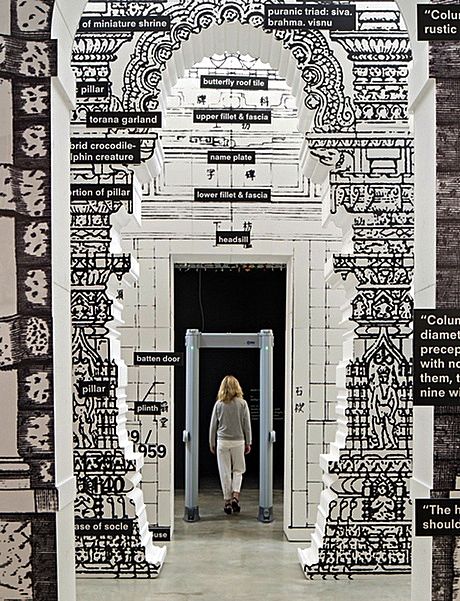
You could say that a significant portal that is missing from the above exhibit is precisely that portal engendered by the internet and html that allows me (and everyone else, for that matter) to enter exactly what I'm thinking right now. I don't know if there's ever been a portal of entry that is so vast and so open and for the most part so free of restriction. I realized the incredibleness of this portal now almost 18 years ago, and whether it is seen that way or not, practically every time I post something it's not a reference to myself, it's a reference to the meta-architecture of that most virtual of all portals.
|






